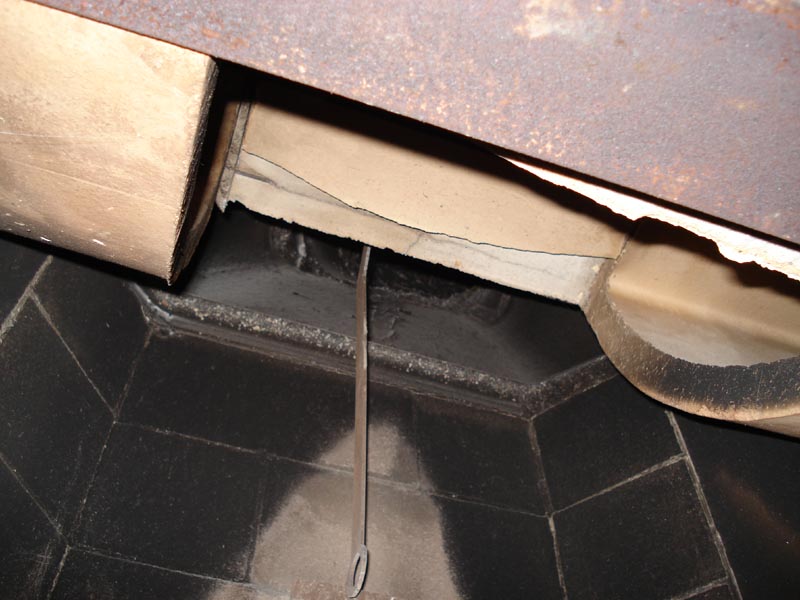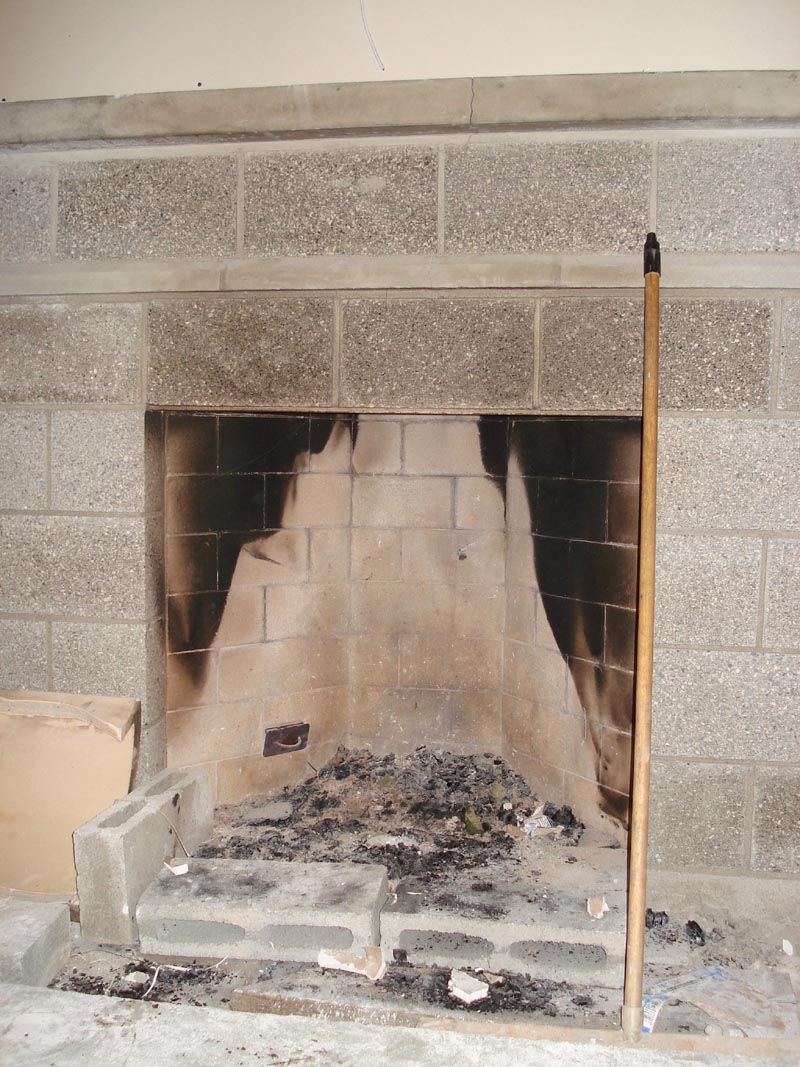Broken Throat Tile
An Analysis
1/4/25
|
But last week we learned of another broken throat tile, this time in a Rumford built twenty-five years ago. It wasn't apparent that the fireplace had been abused. The owner had lived in the house for five years and used the Rumford regularly. Two weeks ago there was an electical outage and the customer used the fireplace continuously for heating. I askd for pictures in order to see if the fireplace had been overfired and to assess the best way to replace or repair the throat. |
The customer responded: "Did you want a picture with With doors open or closed?" On a hunch I asked "Were you burning fires with the doors closed?" The answer was "Both open with the screen closed and closed glass doors on occasion. My preference is with doors open, but if leaving, the doors would be closed. That particular day the power was out, We were using it for heat, so we were feeding a steady fire. It actually fell in many hours after the fire had gone out and completely burned, at that time the doors were closed to keep ash out, the power was back on." |
|
The tile may have broken because the fireplace was burned with the doors closed. Glass fireplace doors are opaque to infrared radiation. You can see shorter wave visible light through glass but glass is not transparent to longer heat waves. See https://www.rumford.com/tech14.html Since this fireplace was built there was a discussion at code meetings about gasketed fireplace doors and everyone was opposed, even the door manufacturers, because they understood that, if the radiant heat couldn't get out, the firebox would over heat and could cause a fire hazard. See https://www.rumford.com/tech14.html#gdefeat
|
So what I think happened was that closing the doors blocked the cooling room air from flowing under the throat tiles and the tiles themselves got very hot. Normally a firebox with open doors will get up to about 1,600 deg. F but with the doors closed, the throat tiles at the top of the firebox may have gotten much hotter - maybe even to about 2,000 deg.F which is close to vitrification - the firing temperature in which they are made. Then opening the doors to load more fuel would have suddenly cooled the throat and it may have been the thermal shock that broke the tile.
|
|
The broken tile needs to be repaired or replaced. But when the fireplace is repaired get a good screen and don't burn a fire with the doors closed. Jim Buckley Note: Rumford throats are made of fireclay. Fireclay and firebrick don't expand as much as ordinary clay but they do expand with heat and do go through a cristobalite inversion at about 250 deg. C (482 deg. F) and a quartz inversion at about 573 deg. C (1,063 deg F). Rumford throats are most likely to break if heated too fast or cooled too fast especially around the inversion temperatures of 482 deg. F and 1,063 deg. F. Perhaps grouting the throats solid with ordinary mortar would dissipate more heat and slow down the temprature rise so the throat tiles don't break by thermal shock. References:
Wikipedia on Quartz Inversion
|

Buckley Rumford Fireplaces
Copyright 1995 - 2025 Jim Buckley
All rights reserved.
webmaster

